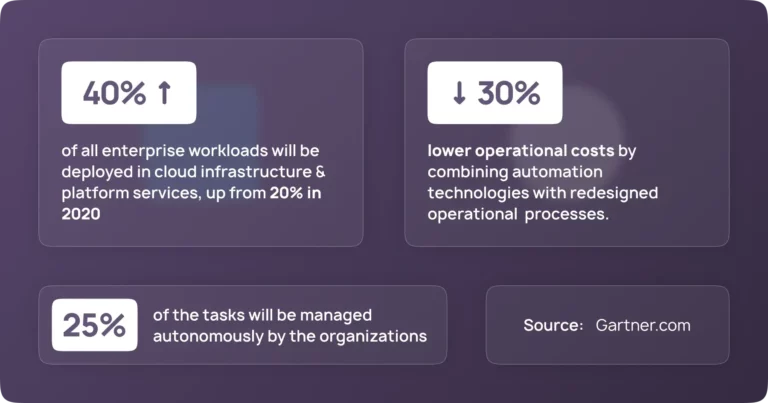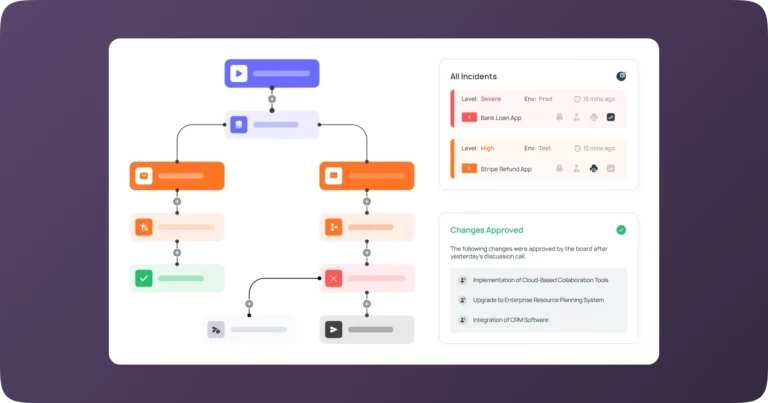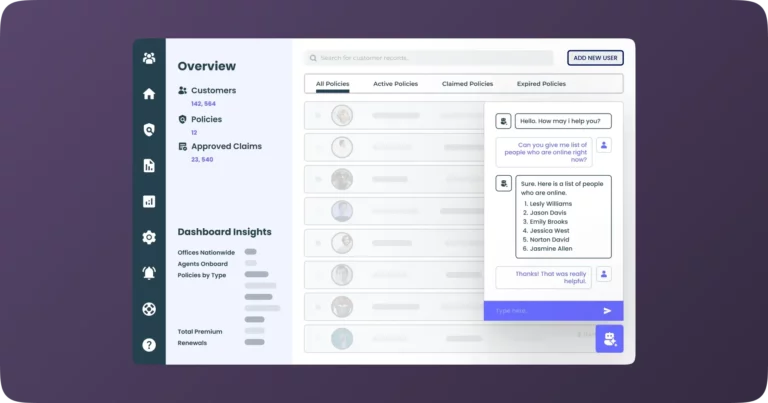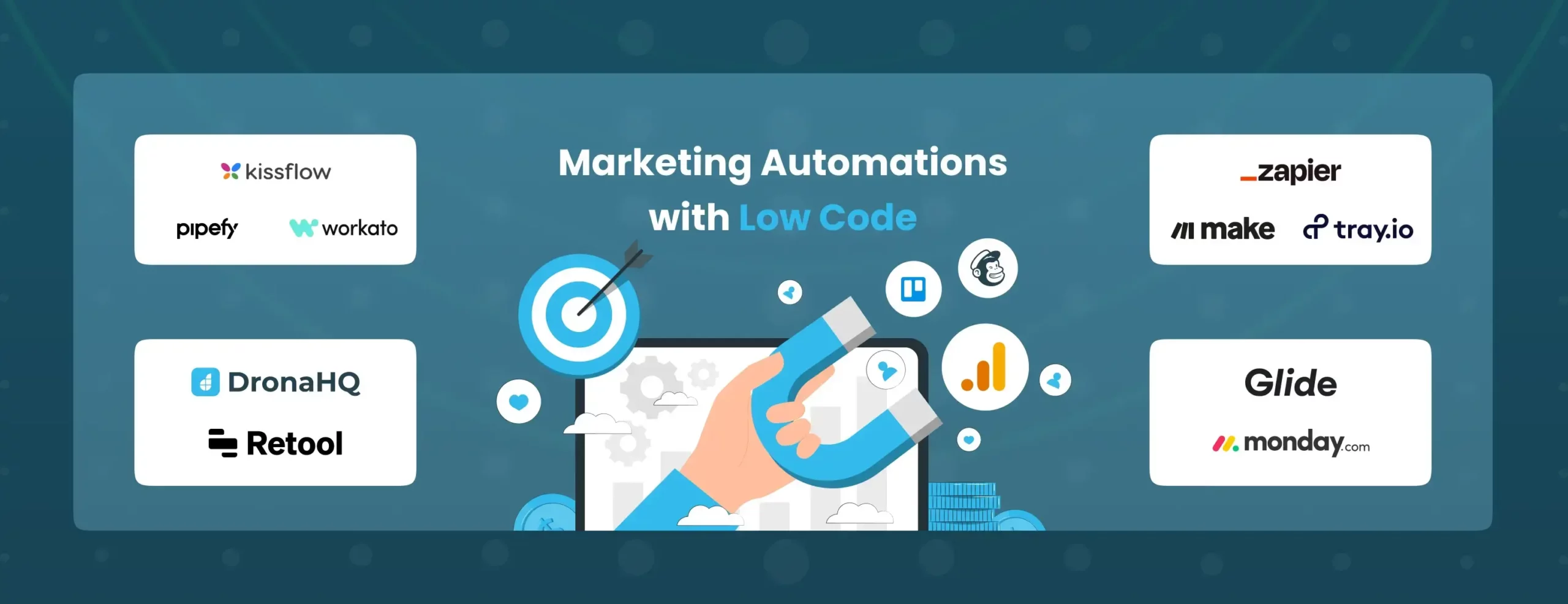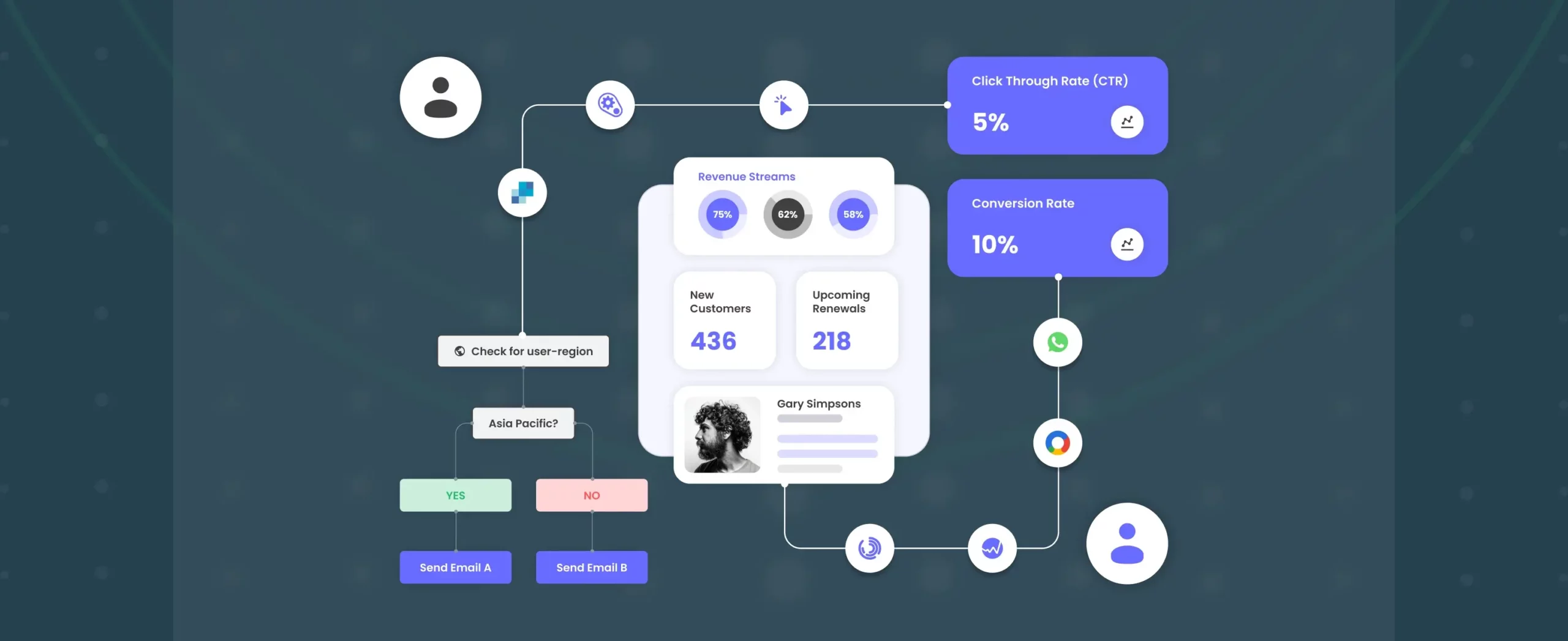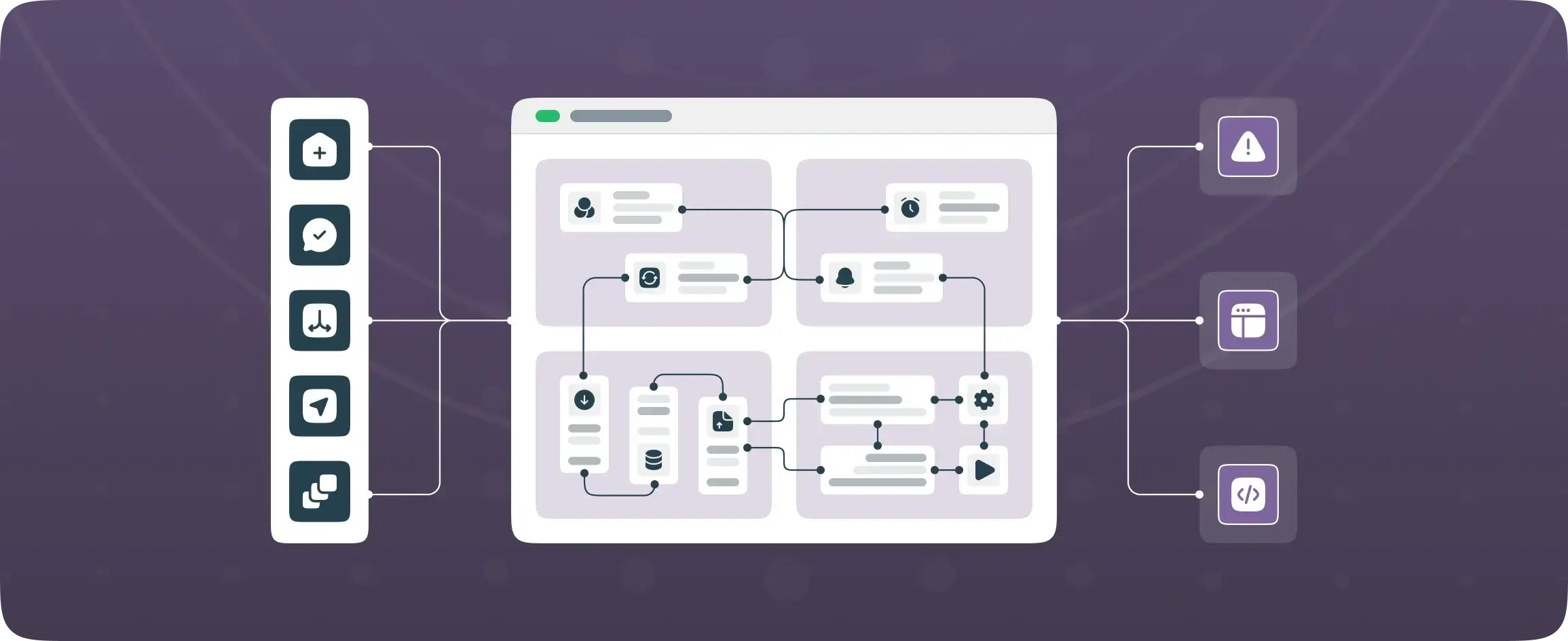

The Role of Low-Code in Enterprise Automation
More and more Chief Technology Officers (CTOs) are under increasing pressure to scale up productivity, directly impacting customer experience and customer value. Despite various budget cuts across industries, investment in digital transformation continues to rise. According to reports, it’s expected that 40% of all enterprise workloads will be deployed in cloud infrastructure and platform services, up from 20% in 2020.
Companies are striving to adapt workflows, with the pace of automation accelerating to minimize time spent on manual processes and maximize efficiency. Gartner predicts that by 2024, organizations will lower operational costs by 30% by combining automation technologies with redesigned operational processes.
Technological advancements are significantly contributing to the rise of automation. It is anticipated that by this year, organizations will manage 25% more tasks autonomously. While much of this progress is driven by robotic process automation (RPA) for front-end operations, the automation of critical back-office operations, infrastructure, and data processes will require more advanced orchestration and automation tools that offer comprehensive integration capabilities and enhanced functionality.
With this context, we are here to debrief enterprise automation, how it fits in the guidebook for a high-growth company, and the pivotal role a low-code platform can play in this transformation.
What is Enterprise Automation?
Enterprise automation refers to the use of advanced technologies to automate complex business processes across various departments within an organization. It aims to enhance efficiency, accuracy, productivity, and cost-effectiveness by reducing human intervention. Modern enterprise automation integrates artificial intelligence (AI), machine learning (ML), and other cutting-edge technologies to streamline operations. According to Gartner, organizations that embrace automation can achieve significant (30%) cost savings and operational improvements.
Types of Enterprise Automation
- Basic Automation: Basic automation involves using simple tools and technologies to automate repetitive and manual tasks.
Example: Automating data calculations in spreadsheets using formulas. - Robotic Process Automation (RPA): RPA uses software bots to perform repetitive, rule-based digital tasks, such as data entry and form filling. While RPA can significantly enhance efficiency, it is limited in scalability and requires high maintenance, as changes in processes often necessitate new bots.
Example: Automating data entry across multiple applications. - Business Process Management Software (BPMS): BPMS focuses on digitizing and optimizing complex business processes. Although effective, it demands a high level of commitment and specialized skills, making it less flexible and more challenging to implement.
Example: Digitizing and optimizing complex workflows. - Commercial Off-the-Shelf Solutions (COTS): COTS offers pre-built templates for specific business functions but lacks customization and scalability. They often depend heavily on vendors and can be expensive to tailor to unique business needs.
Example: A retail company uses COTS to automate inventory management but struggles to customize it for specific needs. - Low-Code Automation: Low-code platforms enable users to create and automate applications using visual development tools, reducing the need for extensive coding. This approach allows for rapid development and deployment, making it ideal for end-to-end process automation.
Example: Using visual development tools to create and automate applications.
Challenges with Existing Automation Technologies
Finding the right solution to automate processes can be challenging. Large organizations often have departments using outdated workflows or temporary fixes like macro-rich spreadsheets, which are risky and unsustainable. Common challenges include:
- Limited Scalability: Traditional automation tools like RPA struggle with scalability and require frequent updates.
- Complexity: BPMS can be complex and demanding, requiring specialized skills and significant resources.
- Vendor Dependence: COTS solutions often lack flexibility and depend heavily on vendors for customization.
- User Adoption: Complex tools with steep learning curves hinder user adoption and reduce overall effectiveness.
How Low-Code Fits into the Enterprise Automation Story
Low code is a visual approach to application development that enables users of varying technical expertise to create applications for web and mobile using drag-and-drop components and model-driven logic via a graphical user interface.
Low-code platforms address many challenges associated with traditional automation technologies:
- Empowering Non-Technical Users: Many traditional automation tools require specialized skills and significant coding expertise. Low-code platforms democratize automation by allowing non-technical users to create and automate their solutions, reducing dependency on IT departments.
- Rapid Development and Deployment: Developing and deploying applications using traditional methods can be time-consuming and resource-intensive. These platforms enable quick development and deployment of applications, accelerating the automation process.
- Integration with Existing Systems: Integrating disparate systems can be complex and challenging. Low-code platforms facilitate seamless integration across various systems and departments, ensuring a unified approach to automation.
- Enhancing Scalability and Flexibility: Many traditional tools struggle with scalability and adaptability. Low-code solutions are designed to scale with business needs, offering flexibility and adaptability.
- Improving User Experience: Complex tools with steep learning curves hinder user adoption and reduce overall effectiveness. Intuitive interfaces and comprehensive support ensure higher adoption rates and more effective use of automation tools.
Benefits of Enterprise Automation with Low-Code Platforms
- Increased Accuracy and Productivity: Automation reduces errors and accelerates task completion, allowing employees to focus on high-value activities.
- Streamlined Workflows: Automated processes create a seamless flow of tasks and information across departments, improving coordination and decision-making.
- Improved Collaboration: Centralized automation platforms enhance collaboration by providing real-time updates and a shared workspace for communication and document sharing.
- Resource Optimization: Automation eliminates redundant tasks and reallocates human resources to more strategic activities, optimizing resource utilization.
- Cost Reduction: By minimizing manual labor and errors, automation significantly reduces operational costs and improves profitability.
Examples of Low-Code Solutions for Enterprise Automation
- Automated Approval Workflows A low-code platform can be used to build an automated approval workflow for expense reports. Employees submit their expenses through an application, and the system automatically routes the reports to the appropriate manager for approval, significantly reducing processing time and ensuring compliance with company policies.
- Custom CRM Systems A company uses a low-code platform to develop a customized CRM system tailored to its unique sales processes. This system integrates with existing customer data and automates lead management, follow-ups, and reporting, enhancing the efficiency and effectiveness of the sales team.
- Employee Onboarding Applications An HR department creates an employee onboarding application using a low-code platform. This application automates the entire onboarding process, from document submission to training schedule coordination, ensuring a smooth and consistent experience for new hires.
- Inventory Management Systems A retail company builds an inventory management system using a low-code platform. The system automates stock level monitoring, reorder notifications, and supplier communications, optimizing inventory levels and reducing the risk of stockouts or overstocking.
- Customer Service Portals A customer service team develops a self-service portal using a low-code platform. The portal integrates with the company’s knowledge base and ticketing system, allowing customers to find answers to common questions and submit support requests, improving customer satisfaction and reducing the workload on support staff.
Key Trends Driving Enterprise Automation
- AI and Machine Learning: Integrating AI and ML into automation processes enhances efficiency and decision-making capabilities.
- IoT Integration: Connecting devices and systems through IoT enables smarter automation and real-time data processing.
- Digital Assistants: Bots and digital assistants streamline workflows and improve user interaction.
- Unified Customer Experiences: Ensuring consistency across multiple channels enhances customer satisfaction and loyalty.
Conclusion
Enterprise automation, powered by low-code platforms, is revolutionizing how businesses operate. By addressing the limitations of traditional automation tools and enabling rapid development and deployment, low-code platforms empower organizations to enhance efficiency, reduce costs, and drive innovation. As businesses continue to embrace digital transformation, the role of low-code in enterprise automation will become increasingly crucial.
Explore DronaHQ’s low-code platform to see how it can help your organization achieve its automation goals and stay competitive in the digital age.
